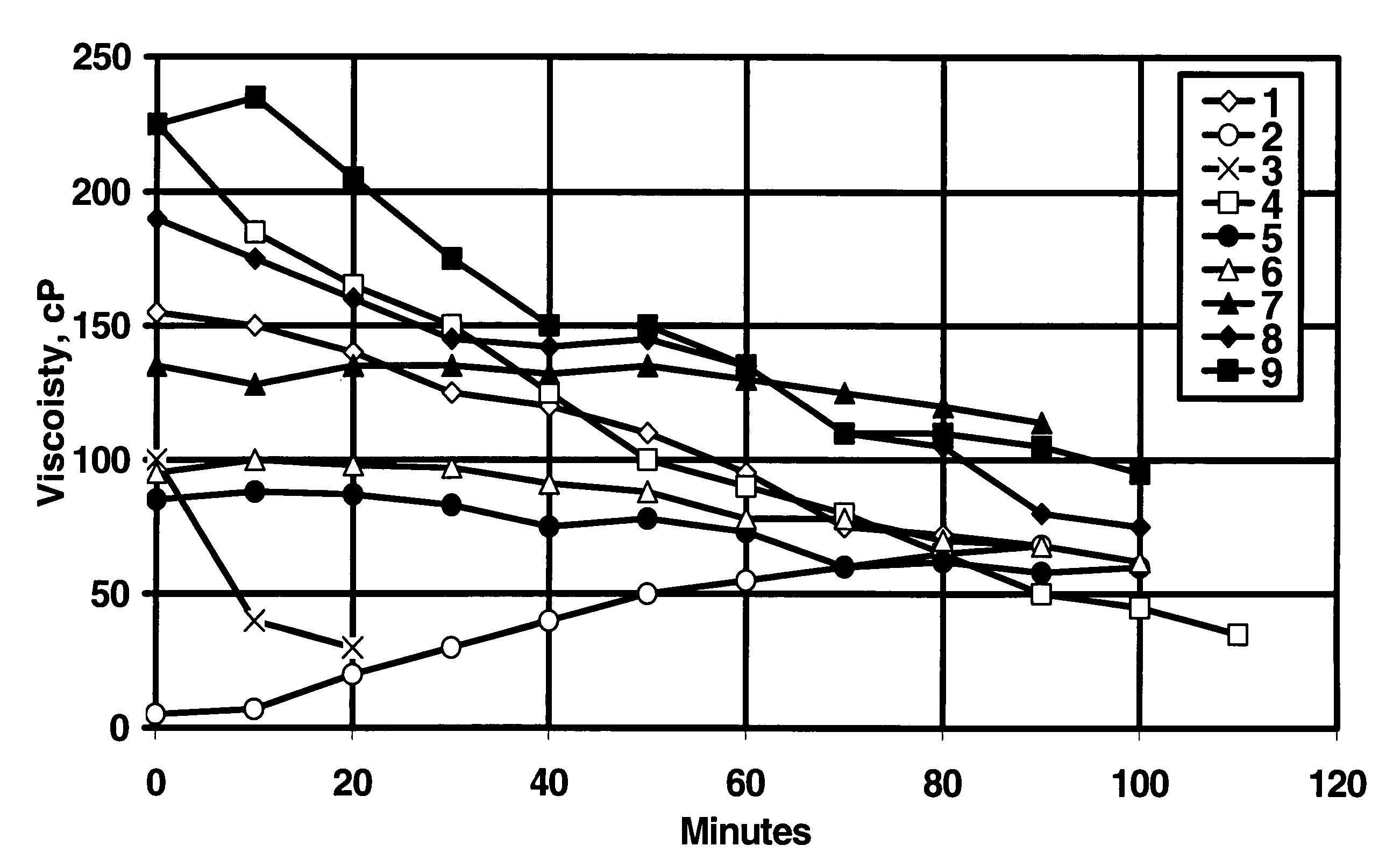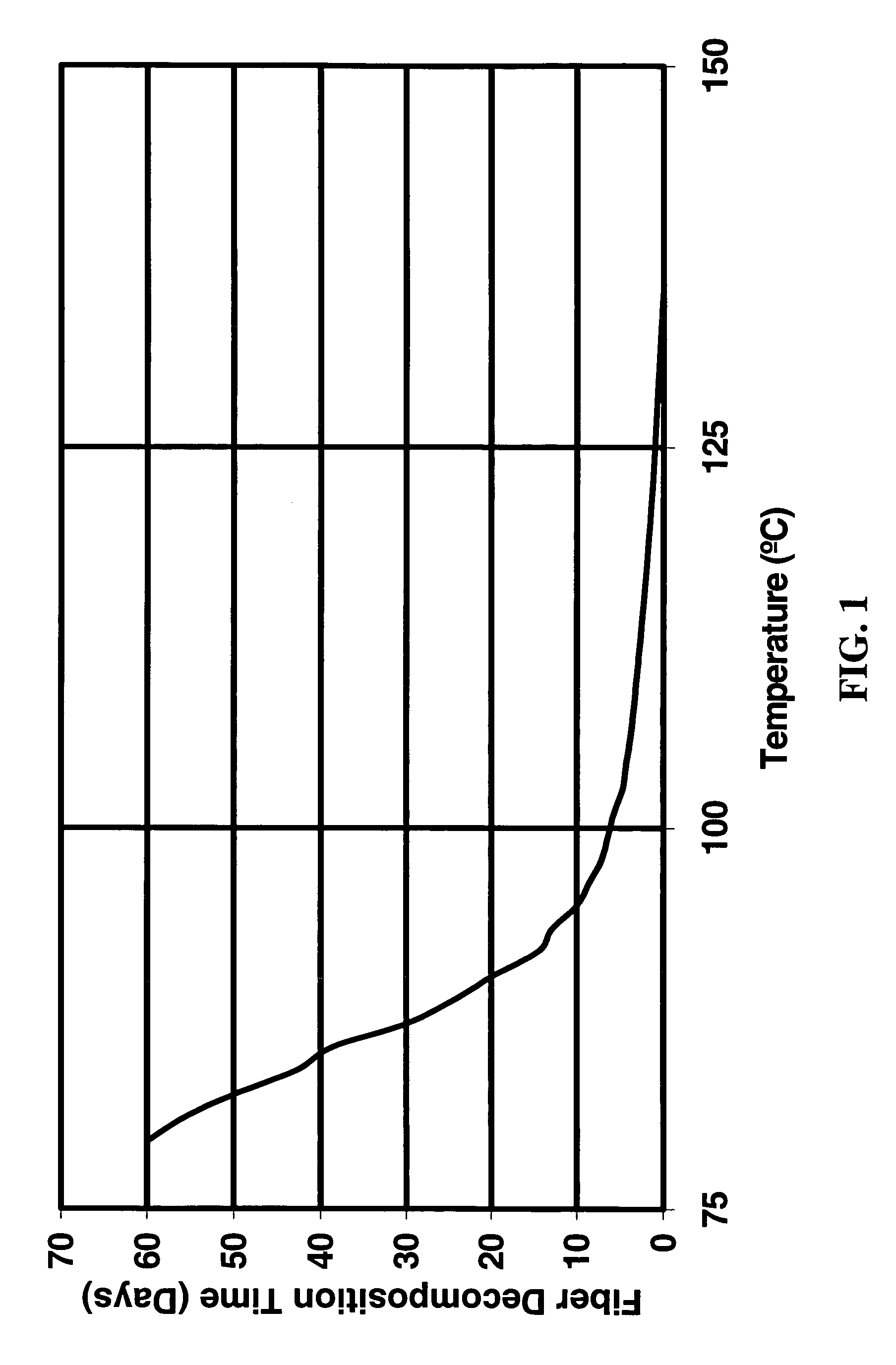Method of using degradable fiber systems for stimulation
a fiber system and degradable technology, applied in the field of particulate transport, can solve the problem of insufficient viscosity of the carrier fluid in the absence of fibers, and achieve the effect of preventing the settling of proppan
- Summary
- Abstract
- Description
- Claims
- Application Information
AI Technical Summary
Benefits of technology
Problems solved by technology
Method used
Image
Examples
example 1
[0045]FIG. 1 shows the decomposition rate of a suitable fiber of the invention, a polylactic acid containing about 87 weight % polylactide, about 12 weight % water, and about 1 weight % sizing. The material was NatureWorks™ PLA 6201D or NatureWorks™ PLA 6202D, made into a fiber of average length about 5.7 to 6.3 mm, and denier about 1.35 to about 1.45. It has been found that the degradation rate is about the same for 6201D and 6202D. It can be seen that the fiber decomposes in about 1 day at 121° C. (about 250° F.) and at about 2 months at 79.4° C. (about 175° F.).
example 2
[0046]The viscosities of a number of polymer-based fluids were determined at various temperatures as a function of time at temperature in a Fann 50 viscometer. Each fluid contained 3.60 g / L (30 ppt) of the same fibers as used in Example 1. Fluids were made in a Waring blender; in each case, the fluid was made by adding slurried polymer to water, hydrating the polymer, then adding other additives, then adding fiber to the linear gel before the crosslinking step, and then adding crosslinker. Those skilled in the art know how to make metal crosslinked polymer fluids in the laboratory and in the field, and they know the variations that can be made (for example pre-mixing certain components, or using batch mixing or continuous mixing methods) to the following general procedure. Specific fluids should be tested in a manner similar to this before use. The runs with fluids 1-7 were done at 93° C. (200° F.); fluid 8 was the same fluid as fluid 7 but the run was done at 107° C. (225° F.); flu...
PUM
| Property | Measurement | Unit |
|---|---|---|
| length | aaaaa | aaaaa |
| length | aaaaa | aaaaa |
| concentration | aaaaa | aaaaa |
Abstract
Description
Claims
Application Information
 Login to View More
Login to View More - R&D
- Intellectual Property
- Life Sciences
- Materials
- Tech Scout
- Unparalleled Data Quality
- Higher Quality Content
- 60% Fewer Hallucinations
Browse by: Latest US Patents, China's latest patents, Technical Efficacy Thesaurus, Application Domain, Technology Topic, Popular Technical Reports.
© 2025 PatSnap. All rights reserved.Legal|Privacy policy|Modern Slavery Act Transparency Statement|Sitemap|About US| Contact US: help@patsnap.com



